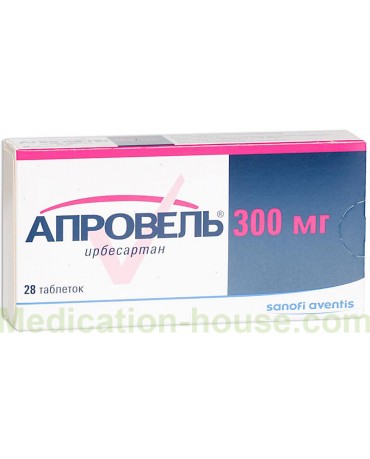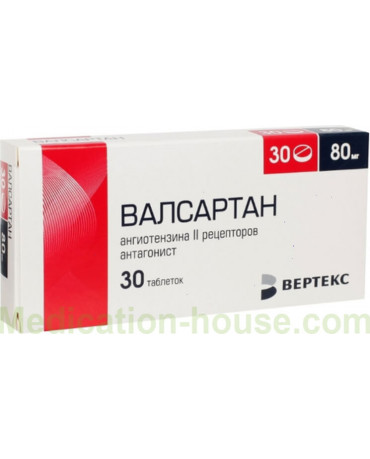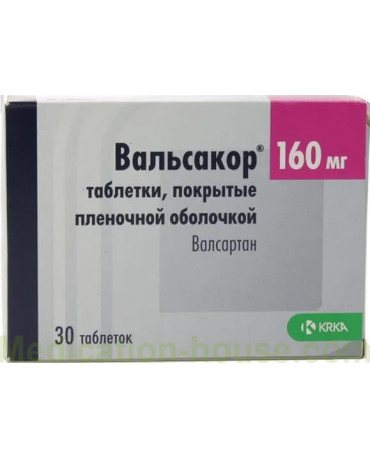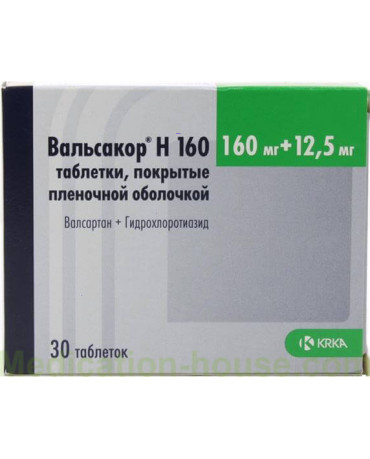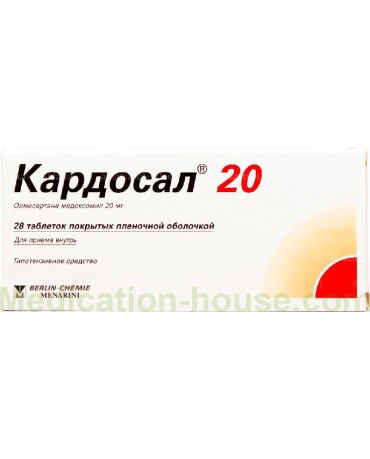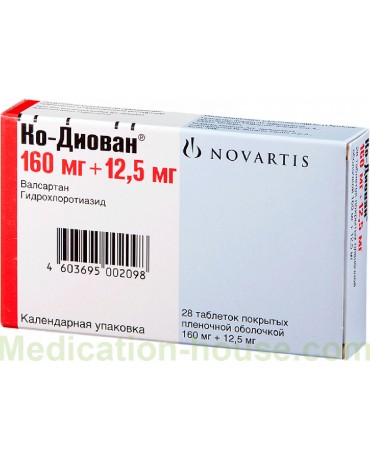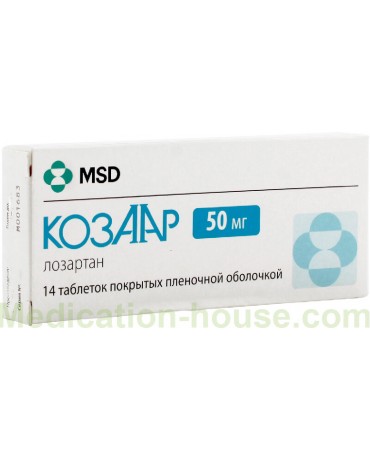Instruction for Diovan
You can buy Diovan here
Diovan is an active specific antagonist of angiotensin II receptors for oral administration.
Release form and composition
Diovan is available in the form of coated tablets:
Yellow, oval, with beveled edges, on one side of the risk and the inscription "DO", on the other - "NVR" (14 pcs. In blisters, 1, 2, 4 or 7 blisters in a cardboard box);
Pale pink, round, with beveled edges, on one side there is a risk and the inscription "D / V", on the other - "NVR" (14 pcs. In blisters, 1, 2, 4 or 7 blisters in a cardboard box) ;
Gray-orange, oval, on one side of the risk and the inscription "DX / DX", on the other - "NVR" (14 pcs. In blisters, 1, 2, 4 or 7 blisters in a cardboard box);
Dark gray-purple, oval, with beveled edges, on one side there is a risk and the inscription "DXL", on the other - "NVR" (7 pcs. In blisters, 1, 2, 4, 7 or 20 blisters in a cardboard box ; 14 pcs. in blisters, 1, 2, 4, 7 or 20 blisters in a cardboard box; 56, 98 or 280 pcs. in high density polyethylene bottles).
The composition of 1 tablet includes:
Active ingredient: valsartan - 40, 80, 160 or 320 mg;
Auxiliary components: crospovidone, microcrystalline cellulose, anhydrous colloidal silicon dioxide, hydroxypropyl methylcellulose (hypromellose), magnesium stearate, titanium dioxide (E171), macrogol 8000, iron oxide.
Pharmacological properties
Diovan has antihypertensive properties.
Pharmacodynamics
Valsartan selectively blocks AT1 receptors, which are responsible for the effects of angiotensin II. As a result of this blockade, the concentration of angiotensin II in plasma increases, which can lead to the stimulation of unblocked AT2 receptors. For the active substance Diovan, agonistic activity against AT1 receptors of any severity is uncharacteristic.
The affinity of valsartan for receptors belonging to the AT1 subtype is approximately 20,000 times higher than that for the AT2 subtype. It does not interact and does not block ion channels or receptors of other hormones that play an important role in the regulation of the functions of the cardiovascular system.
The risk of coughing attacks when using the drug is extremely low, due to the lack of effect on the angiotensin-converting enzyme (ACE), which is responsible for the degradation of bradykinin. A comparative study regarding the properties of valsartan and an ACE inhibitor shows that the incidence of dry cough attacks is significantly (p less than 0.05) lower in patients taking Diovan compared with patients receiving an ACE inhibitor (2.6% and 7.9 % respectively). In the group of patients who previously took an ACE inhibitor and suffered from dry cough, valsartan therapy leads to the occurrence of a similar undesirable symptom in 19.5% of cases, and thiazide diuretic therapy - in 19% of cases, while in the group of patients undergoing treatment ACE inhibitor, cough was noted in 68.5% of cases (p less than 0.05).
In patients with arterial hypertension, treatment with valsartan leads to a decrease in blood pressure, which is not accompanied by a change in heart rate. After a single oral dose of Diovan in most patients, the antihypertensive effect is observed within 2 hours, and the peak decrease in blood pressure is achieved within 4-6 hours and lasts for more than 24 hours. With the repeated administration of Diovan, the maximum decrease in blood pressure, regardless of the dose taken, is achieved in most cases within 2-4 weeks and remains at the achieved level during a long course of treatment.
When the drug is combined with hydrochlorothiazide, a significant additional decrease in blood pressure is observed.
Abrupt withdrawal of valsartan does not lead to a significant increase in blood pressure or other undesirable phenomena.
In patients with nephropathy, type 2 diabetes mellitus, and arterial hypertension receiving valsartan at a dose of 160–320 mg, a significant decrease in proteinuria was recorded (36–44%).
When using the drug for 2 years in patients who started taking the drug in the period from 12 hours to 10 days after suffering an acute myocardial infarction (accompanied by systolic dysfunction of the left ventricle and / or left ventricular failure), the rates of cardiovascular mortality and overall mortality decrease , and also increases the time interval before the first hospitalization associated with sudden cardiac arrest, repeated myocardial infarction, exacerbation of chronic heart failure (CHF) and stroke (in the absence of death). In patients with acute myocardial infarction, Diovan's safety profile resembles that of other conditions.
The use of valsartan (average daily dose is 254 mg) for 2 years in patients with CHF II (62% of the control group), III (36%) and IV (2%) functional classes in accordance with the NYHA classification with an internal diastolic diameter of the left ventricle exceeding 2.9 cm / m2 and left ventricular ejection fraction less than 40%, who are undergoing a standard course of therapy, including beta-blockers (36%), digoxin (67%), diuretics (86%) and ACE inhibitors ( 93%), leads to a significant decrease (by 27.5%) in the risk of being admitted to a hospital due to an exacerbation of chronic heart failure.
In patients who have not been treated with ACE inhibitors, there is a significant decrease in the incidence of CHF (the period before the onset of the first unfavorable cardiovascular event), and indicators of cardiovascular and overall (by 33%) mortality. These conditions are assessed according to the following parameters: intravenous administration of vasodilators or inotropic drugs for 4 or more hours without being admitted to a hospital (44% less common), hospitalization caused by an exacerbation of CHF, death, sudden death with resuscitation. In the group of patients taking ACE inhibitors (in the absence of beta-blockers), while taking Diovan, there is no decrease in the overall mortality rate, however, there is a decrease in the incidence of CHF and cardiovascular mortality rates by 18.3%.
The use of the drug is accompanied by a decrease in the number of hospitalizations associated with CHF, an increase in the left ventricular ejection fraction, inhibition of the progression of CHF, an improvement in the functional class of CHF in accordance with the NYHA classification, as well as a weakening of the severity of symptoms and signs of heart failure and an improvement in the quality of life compared to patients who received placebo.
Taking valsartan by patients over 18 years of age, in whom arterial hypertension is combined with impaired glucose tolerance, leads to a statistically significant decrease in the risk of diabetes mellitus in this category of patients. In patients from this group, differing by race, sex and age, valsartan did not affect the frequency of deaths associated with cardiovascular events, ischemic attacks in the absence of death and the development of myocardial infarction, as well as hospitalizations due to arterial revascularization. unstable angina or heart failure.
In patients taking valsartan, the risk of microalbuminuria is significantly reduced compared with patients who did not receive Diovan's treatment. The recommended initial dosage of the drug in patients with impaired glucose tolerance and arterial hypertension is 80 mg once a day. If necessary, the dose is increased to 160 mg.
In children and adolescents aged 6-18 years, the use of valsartan allows a smooth decrease in blood pressure, and this decrease is dose-dependent. In this case, the maximum decrease in blood pressure, regardless of the dose taken, is usually achieved within 2 weeks and remains at the achieved level with prolonged therapy.
Pharmacokinetics
After oral administration of valsartan, its maximum concentration in blood plasma is reached within 2-4 hours. The absolute bioavailability averages 23%. When the drug is taken together with food, the area under the concentration-time curve (AUC) decreases by 48%, despite the fact that, starting from about 8 hours after taking Diovan, the content of the active substance in the blood plasma as in the case of its administration on an empty stomach, and in the case of taking with meals, is the same. However, a decrease in AUC does not lead to a clinically significant weakening of the therapeutic effect, therefore, valsartan can be taken regardless of meal time.
The equilibrium volume of distribution of valsartan after intravenous administration is approximately 17 liters, which proves the absence of a pronounced distribution of the active component of Diovan in the tissues. The degree of binding of valsartan to serum proteins, mainly albumin, is quite high (94–97%).
The ability of valsartan to biotransformation is weak: only 20% of the dose taken orally is excreted in the form of metabolites. In blood plasma in low concentrations (less than 10% of the AUC of valsartan), a hydroxyl metabolite is found that does not have pharmacological activity.
For valsartan, two-phase elimination is characteristic: α-phase (half-life less than 1 hour) and β-phase (half-life about 9 hours). Diovan's active ingredient is excreted mainly unchanged in urine (approximately 13%) and feces (approximately 83%). When administered intravenously, the plasma clearance of valsartan is approximately 2 l / h, and the renal clearance is 0.62 l / h (about 30% of the total clearance). The half-life of valsartan is 6 hours.
In patients with CHF, the half-life and the time to reach the maximum concentration of valsartan are almost similar to those in healthy volunteers. The increase in the maximum concentration and AUC is directly proportional to the increase in the dose of Diovan (from 40 mg to 160 mg when taken 2 times a day). On average, the cumulation factor is 1.7. With oral administration, the clearance of valsartan was approximately 4.5 l / h, and the age of the patients did not have a clinically significant effect on this parameter.
In some patients over 65 years of age, the systemic bioavailability of the drug was higher than that in young patients, but this fact has no clinical significance.
No correlation was found between the systemic bioavailability of valsartan and renal function. In patients with a glomerular filtration rate of more than 10 ml / min and renal dysfunction, there is no need for dose adjustment. At the moment, there is no information on the use of Diovan in patients on hemodialysis. Valsartan is characterized by a high degree of binding to blood plasma proteins, so its elimination from the body through hemodialysis is unlikely.
In patients with mild to moderate liver dysfunctions, the bioavailability (AUC) of valsartan is 2 times higher than in healthy volunteers. However, there is no correlation between the AUC values of the active substance and the degree of liver dysfunction. Diovan's use in patients with severe liver dysfunctions has not been studied.
Pharmacokinetic characteristics of valsartan in children and adolescents aged 6-18 years do not differ from those in adult patients.
Indications for use
CHF (chronic heart failure) of II-IV functional class according to the NYHA classification in patients receiving standard therapy, including diuretics, digitalis drugs, and ACE inhibitors or β-blockers (not simultaneously) (the use of these drugs is optional);
Arterial hypertension;
Acute myocardial infarction, complicated by left ventricular failure and / or left ventricular systolic dysfunction (with stable hemodynamic parameters) - to increase patient survival.
Contraindications
Pregnancy;
Breastfeeding (lactation) period;
Hypersensitivity to drug components.
According to the instructions, the drug should be taken with caution in the following cases:
Bilateral renal artery stenosis;
Stenosis of an artery of a solitary kidney;
Compliance with a sodium-restricted diet;
Conditions accompanied by a decrease in the volume of circulating blood (BCC), including diarrhea, vomiting;
Hepatic failure on the background of obstruction of the biliary tract;
Renal failure with creatinine clearance (CC) ≤ 10 ml / min, including patients on hemodialysis.
It is impossible to formulate specific recommendations for the use of the drug in childhood, since no controlled studies of the safety and efficacy of valsartan therapy have been conducted in children and adolescents under 18 years of age.
Instructions for use: method and dosage
Diovan tablets should be taken orally without chewing.
Recommended dosing regimen depending on the disease / condition:
Arterial hypertension: 80 mg once a day, daily (regardless of gender, age and race). The antihypertensive effect is achieved in the first 2 weeks of the course, the maximum effect is observed after 4 weeks. If it is not possible to adequately reduce blood pressure (BP), the daily dose may be increased to 320 mg, or additionally prescribed diuretics;
Chronic heart failure: initial dose - 40 mg 2 times a day, daily. The dose should be gradually increased to 80 mg 2 times a day, and in case of good tolerance - up to 160 mg 2 times a day. In this case, it may be necessary to reduce the dose of diuretics taken simultaneously with Diovan. The maximum daily dose is 320 mg, divided into 2 doses. When assessing the condition of patients with chronic heart failure, the functional state of the kidneys should also be assessed;
Condition after myocardial infarction (therapy with valsartan must be started within 12 hours after myocardial infarction): the initial dose is 20 mg (1/2 tablet 40 mg) 2 times a day. The dose should be increased by titration (40, 80, 160 mg 2 times a day), gradually, over several weeks, until the target dose of 160 mg 2 times a day is reached. The maximum daily dose is 320 mg, divided into 2 doses. As a rule, reaching a dose of 80 mg 2 times a day is recommended by the end of the second week of therapy; the maximum target dose (160 mg 2 times a day) is usually achieved by the end of the third month. Achievement of the target dose depends on the tolerance of valsartan during the titration period. When assessing the condition of patients after myocardial infarction, the functional state of the kidneys should also be assessed.
If, when taking Diovan, hypotension develops, which is accompanied by clinical manifestations or impaired renal function, it is recommended to consider reducing the dose.
Correction of the dosage regimen is not required in patients with non-biliary hepatic insufficiency without cholestasis and in patients with impaired renal function.
Side effects
Side effects from taking valsartan, observed with a frequency of ≥1%, regardless of the duration of therapy, the dose of Diovan, age, gender or race of patients, including data from post-marketing studies in a group of patients with arterial hypertension:
Hematopoietic system: very rarely - thrombocytopenia; often neutropenia;
Immune system: very rarely - hypersensitivity reactions, including serum sickness;
Central nervous system (CNS): very rarely - headache4; rarely - dizziness4; sometimes - fainting1, vertigo, decreased libido, insomnia; often postural dizziness2;
Cardiovascular system (CVS): very rarely - vasculitis; sometimes - heart failure1, arterial hypotension1.4; often - orthostatic hypotension2;
Digestive system: very rarely - nausea4; sometimes - abdominal pain, diarrhea;
Respiratory system: sometimes - cough;
Dermatological responses: very rarely - itching, rash, angioedema3;
Musculoskeletal system: very rarely - myalgia, arthralgia; sometimes - back pain;
Urinary system: very rarely - impaired renal function3,4, renal failure3, acute renal failure3;
Infections and invasions: very rarely - rhinitis; sometimes - infections of the upper respiratory tract, sinusitis, pharyngitis; often viral infections;
Other: sometimes - a feeling of fatigue, edema, asthenia, hyperkalemia1,2.
Criteria for assessing the frequency of adverse events: very rare - <1/10 000; rarely - <1/1000 -> 1/10 000; sometimes - <1/100 -> 1/1000; often - <1/10 -> 1/100; very often -> 1/10.
Footnotes
1 - in patients who received the drug after myocardial infarction.
2 - in patients who received the drug during the treatment of CHF.
3 - with a frequency “sometimes” (<1/100 -> 1/1000) in patients who received the drug after myocardial infarction.
4 - more often in CHF patients who received the drug (often - dizziness, hypotension, impaired renal function; sometimes - nausea, headache).
All patients with CHF took conventional drug therapy, including digitalis drugs, diuretics, ACE inhibitors, or β-blockers. In the case of prolonged use of valsartan in patients with CHF, no additional side effects were noted.
Data of changes in laboratory parameters:
The concentration of hemoglobin and hematocrit: in controlled clinical trials, taking valsartan showed a significant (more than 20%) decrease in hematocrit in 0.8% of patients, hemoglobin in 0.4%. For comparison, patients receiving placebo showed a decrease in both hemoglobin and hematocrit in 0.1% of cases;
Neutropenia: in those who received the drug it was detected in 1.9% of cases; among those who received ACE inhibitors - 1.6%;
The concentration of total bilirubin creatinine and potassium in blood serum: a significant increase in values was noted, respectively, in 0.8%, 4.4%, 6% of patients taking Diovan, and in 1.6%, 6.4%, 12, 9% - those who took ACE inhibitors. In patients with CHF, an increase in creatinine concentration of more than 50% was observed in 3.9% of cases with Diovan therapy, compared with 0.9% in the placebo group. At the same time, the level of potassium in the serum increased by more than 20% in 10.0% of patients receiving Diovan, and in 5.1% of those receiving placebo. During therapy after myocardial infarction, there was an increase in serum creatinine concentration by 2 times in 4.2% who took valsartan, 3.4% who took captopril and 4.8% who took valsartan + captopril;
Increased activity of hepatic transaminases: there are reports of cases in patients receiving valsartan;
An increase in the concentration of urea nitrogen in the blood serum (more than 50%): with valsartan therapy - 16.6%, in patients from the placebo group - 6.3%.
Overdose
The main symptom of Diovan's overdose is a pronounced decrease in blood pressure, which can provoke blurred consciousness, shock and / or collapse. In this case, symptomatic therapy is prescribed, the features of which depend on the severity of the symptoms and the time that has passed since the drug was taken.
In case of accidental overdose, it is necessary to provoke vomiting (if valsartan has been taken relatively recently) or to wash the stomach. When diagnosing a pronounced decrease in blood pressure, measures such as intravenous administration of 0.9% sodium chloride solution and laying the patient down (legs are in an elevated state) are recommended for the period of time necessary for treatment. You should also take active measures to maintain the normal functioning of the cardiovascular system, in particular, regular monitoring of the amount of urine excreted, the volume of circulating blood and the activity of the heart and respiratory systems.
Special instructions
With Diovan's therapy, regular monitoring of laboratory parameters in patients with essential arterial hypertension is not needed.
In the case of a pronounced deficiency of sodium and / or the volume of circulating blood in the body, for example, when receiving high doses of diuretics, occasionally, at the beginning of the drug therapy, arterial hypotension may occur with typical clinical manifestations. Therefore, before starting treatment, it is recommended to correct the sodium content and BCC, for example, by reducing the dose of diuretic. With the development of hypotension, the patient must be laid horizontally, his legs should be raised, then, if necessary, an intravenous infusion of 0.9% sodium chloride solution should be made. After stabilization of blood pressure, therapy with Diovan can be continued.
As a result of Diovan's intake for a short course of a group of 12 patients with renovascular hypertension, which developed secondarily as a consequence of unilateral renal artery stenosis, no significant changes in renal hemodynamics, blood urea nitrogen (BUN) concentration or serum creatinine were observed. However, given that taking other drugs that affect the renin-angiotensin-aldosterone system (RAAS) may cause an increase in serum creatinine and urea concentrations in patients with unilateral or bilateral renal artery stenosis, it is recommended to monitor these parameters as a precaution.
After suffering a myocardial infarction or in patients with CHF, at the beginning of the drug therapy, a slight decrease in blood pressure is often observed, during this period it is recommended to monitor its indicators. If the recommendations for the dosing regimen are followed, there is usually no need to cancel Diovan due to hypotension. In sensitive patients, as a result of inhibition of the RAAS, there is a possibility of changes in renal function. In severe CHF, treatment with ACE inhibitors and angiotensin receptor antagonists may be accompanied by an increase in azotemia and / or oliguria, in isolated cases - acute renal failure and / or death (for this reason, an assessment of renal function in patients who have had acute myocardial infarction, and in patients with heart failure). It is allowed to take Diovan in the treatment of a condition after a myocardial infarction in combination with acetylsalicylic acid, thrombolytics, statins and β-blockers.
Influence on the ability to drive vehicles and complex mechanisms
Taking Diovan, it is recommended to be careful when driving or working with other complex mechanisms.
Application during pregnancy and lactation
Since the drug has an effect on the RAAS, it should not be prescribed to patients planning a pregnancy. The specialist should inform women of reproductive age about the potential risk of using the drug during pregnancy.
Given the mechanism of action of APA II, it is impossible to completely eliminate the risk to the fetus during treatment. The effect of ACE inhibitors, which also affect the RAAS, on the fetus in the II and III trimesters of pregnancy can lead to various malformations and intrauterine death. According to retrospective data, the use of ACE inhibitors in the first trimester of pregnancy increases the risk of having children with birth defects. There are reports of renal dysfunction and oligohydramnios in newborns, as well as spontaneous abortions in mothers who took Diovan during pregnancy.
If the pregnancy test showed a positive result during the course of treatment with valsartan, the drug should be canceled as soon as possible.
It is not known whether valsartan penetrates into breast milk, so its use during lactation is contraindicated.
There is no information available on Diovan's effect on human fertility. During experiments with animals, no signs of the effect of the drug on fertility were found.
With impaired renal function
No dose adjustment is required in patients with impaired renal function. Diovan should be taken with caution in this category of patients.
For violations of liver function
In patients with hepatic impairment, there is no need for dose adjustment, unless the disease is caused or accompanied by cholestasis. For this category of patients, Diovan should be taken with caution, not exceeding a daily dose of 80 mg.
Drug interactions
The simultaneous use of valsartan with potassium-sparing diuretics (spironolactone, triamterene, amiloride), potassium preparations or salts containing potassium can lead to an increase in the concentration of potassium in the blood serum. If such a combination treatment is necessary, special care should be taken.
According to the results of a study of the use of the drug Diovan with the following drugs / agents: warfarin, furosemide, cimetidine, digoxin, hydrochlorothiazide, atenolol, indomethacin, glibenclamide and amlodipine - no clinically significant interaction was noted.
Since Diovan does not undergo significant metabolism, it is also unlikely for him to have clinically significant interactions with other drugs - inhibitors or inductors of the cytochrome P450 system. Despite the fact that valsartan binds to blood plasma proteins to a large extent, there was no evidence of any interaction (in vitro) at this level with a number of molecules that have the same high binding to plasma proteins, for example, furosemide, diclofenac and warfarin ...
Terms and conditions of storage
Store in a dry, dark place, out of the reach of children, at temperatures up to 30 ° C.
The shelf life is 3 years.
Reviews
Patients with arterial hypertension leave mostly favorable reviews about Diovan. They report an improvement in the condition both when the drug is used as monotherapy and when it is prescribed in combination with other antihypertensive drugs. Sometimes at the beginning of treatment, side reactions appear, most often expressed in nausea and light dizziness. Since Diovan is not suitable for everyone, the treatment of arterial hypertension should be selected individually.
Doctors speak well of the drug as an effective remedy for the treatment of CHF and recommend its use as part of rehabilitation therapy after myocardial infarction. If the patient adheres to an individually selected treatment regimen, Diovan's reception gives a good result and is not accompanied by undesirable phenomena.
Terms of sell
You can buy Diovan without a prescription.


